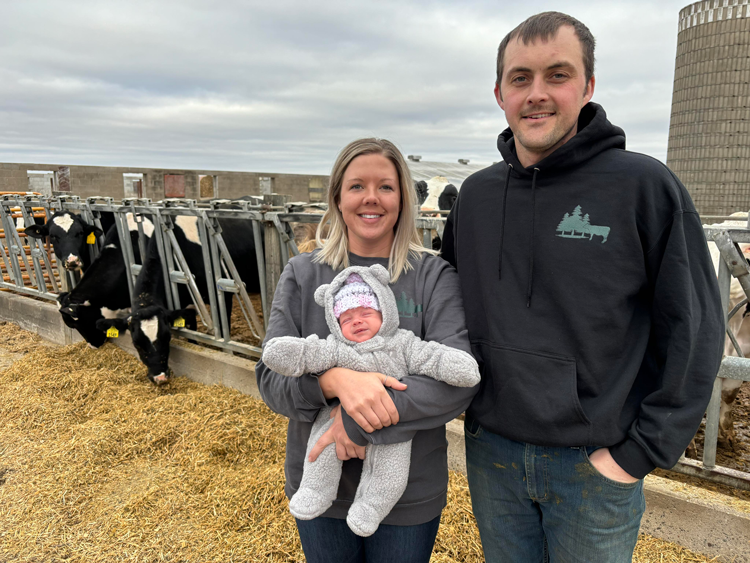
Dairy farming involves a daily mix of old and new knowledge. It is balancing tried and true practices we know help our cows be productive with new technologies that can benefit animals and the people who take care of them.
In the March issue of Hoard’s Dairyman, four farm families shared their experiences with animal monitoring systems in the round table article, “They put more eyes on animal health.” These farms are using various brands of monitoring technology to gather data from their herd, and the information collected helps them keep cows healthier, use fewer antibiotics and reproductive hormones, be more efficient with their time, and so much more.
While all four dairies were very pleased with their monitoring systems, they also acknowledged the need for good “cow people” to make use of the data. “You can’t put a high enough value on a good cow person who knows what to do and when to do it when it comes to animal health,” said Sheldon Luehmann of Pine-Vue Farms, and the other three farms shared similar sentiments.
Along those same lines, monitoring technology can be a great benefit, but the basics of animal care still need to be covered. This includes facility design and cow comfort. We asked these four dairies about changes they made to enhance cow comfort, and their answers are below. If you want to read more, check out the article in the March issue of Hoard’s Dairyman, beginning on page 130.
Ohlde Family Farms (Linn, Kan.): A lot goes into maintaining cow comfort. We handle cows in a low stress manner, have a routine hoof trimming program, and put mats on the parlor decks. We provide cows with properly sized stalls and add bedding frequently. We use sand on two dairies and screw pressed manure solids on the robot dairy.
The best strategy to mitigate heat stress is our cross-ventilated barn with fan baffles and feed line sprinklers. All our dairies use fans and feed line sprinklers along with holding pen fans and sprinklers. The fans are louvered. In the hot months, we also feed an additive to help cool cows.
Pine-Vue Farms (Rollingstone, Minn.): We have done a few things to improve cow comfort since taking over ownership. All the freestalls in the three-row barn were previously metal, and the beds were pasture mats with a cover over the top. In two of the rows we put in flex stalls, which really helped a lot, and in one of those rows we also put in water beds. All the stall beds have sawdust on top and are groomed twice daily when rounding up cows for milking.
Roselawn Farms, LLC (Valders, Wis.): When we retrofitted our barn, we put a lot of emphasis on cow comfort. We have had great success with pasture foam mats. We use a rubber top that’s been holding up really well. We bed every other day with sawdust and hydrated lime to kill any bacteria in the stalls. We’ve also added alley scrapers to keep cows cleaner.
We have tunnel ventilation with a hybrid situation. In spring and fall, the curtains are open, and in the summer when it gets warm enough, the fans kick on. Our ventilation system is all automated. It eliminates the need for an employee monitoring the ventilation system and possibly not taking into account temperature swings. We’re really happy with it and we’re not wasting electricity on days when we don’t need to.
T & C Louters Dairy (Mercid, Calif.): I do everything I can to make sure the cows are comfortable. If I don’t take care of the cows, the cows won’t take care of me. We use recycled manure solids for bedding. For close-up and dry cows during the winter, we use almond shavings.
Every barn on my dairy has fans — the freestall barns, the holding area, and the milking parlor. The vast majority of cows also have soakers, and I have big soakers in my milking parlor. With the animal monitoring system, I could see the true impact of heat on the cows through activity and rumination. From a financial standpoint, improving heat abatement had the biggest impact.
A lot of thought went into cow comfort and many improvements have taken place over the years.








